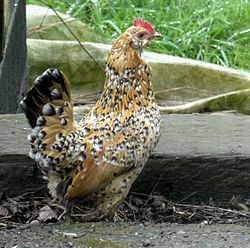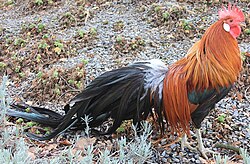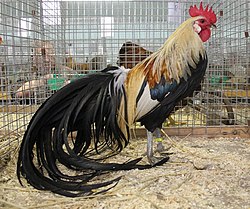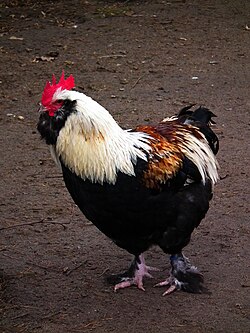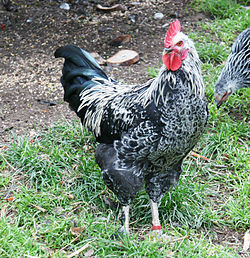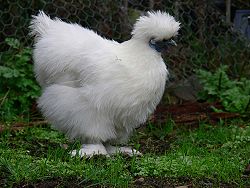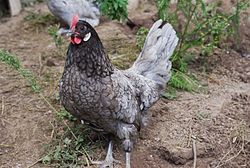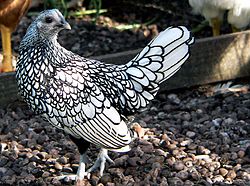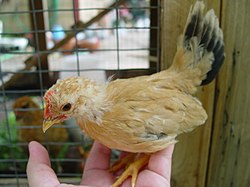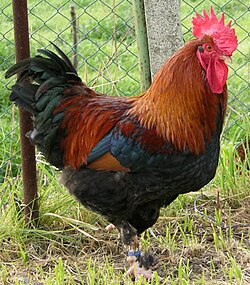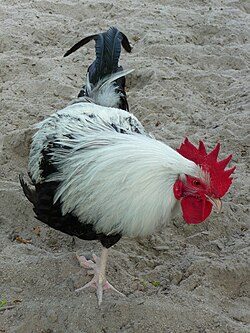Penyakit ayam berak kapur ini sangat berbahaya dan boleh mengakibatkan kadar kematian yang tinggi kepada ayam berusia 1-10 hari.
Penyakit berak kapur bukan hanya menyerang ayam, tetapi unggas lain seperti burung puyuh, burung, itik, angsa dan lain-lain. Penyakit ini disebabkan oleh bakteria samonella pullorum dan gram bakteria negatif yang boleh bertahan lebih daripada 1 tahun di dalam tanah.
Secara amnya, pembuangan air kapur adalah penyakit yang sangat biasa, walaupun ia menjejaskan ayam pada pelbagai peringkat tetapi kadar kematian tertinggi adalah kepada anak ayam yang baru yang menetas sebanyak 40% dan kadar kematian atau kematian sebanyak 85%.
Jangkitan Penyakit berak kapur secara umum, melalui dua cara:
1. Dari ibu kepada anaknya, contoh seperti melalui telur.
2. Melalui hubungan langsung, contohnya peralatan, sangkar, sampah dan pakaian dari pekerja sangkar yang tercemar.
Gejala klinikal penyakit kapur ayam
Secara umumnya, ayam yang diserang penyakit akan mengalami perubahan dalam organ yang diserang. Ayam akan mengalami perubahan dalam patologi organ hati dan limpa akan membesar dan juga diikuti dengan omfalitis. Sekiranya sudah menderita kronik maka organ-organ dalaman akan mengalami keradangan.
Najis ayam berwarna putih, seperti kapur pada umumnya.
Najis cair akan melekat pada bahagian rektum yang akan menjadi putih.
Cloaca akan kotoran kering dan lengket.
Kerandut akan berwarna pucat
Mata akan ditutup dan selera makan akan berkurangan atau berkurang.
Keadaan ayam akan lemah dan pergerakan perlahan.
Kedua-dua sayap akan menggantung dan kelihatan membosankan.
Berpengalaman lumpuh oleh arthritis.
Perubahan dalam patologi penyakit kapur ayam
Diagnosis penyakit berak kapur ayam belanda
Penyakit berak kapur yang disebabkan bakteria salmonella pullorum boleh dikaji melalui organ hati, usus, dan kuning telur dengan melakukan pembiakan ke dalam medium. Ayam yang sudah dijangkiti dapat dikenal pasti dengan gumpalan darah yang cepat.
Pencegahan berak kapur mati
Pencegahan untuk penyakit berak kapur pada ayam boleh dilakukan dengan cara membersihkan reban, peralatan, membersihkan sisa makanan dalam reban, melakukan program sanitasi dan sebaiknya menggunakan antiseptic untuk membantu mengurangkan bakteria atau kulat yang melekat dalam reban. Selain itu, pemberian makanan yang berkhasiat, dan melakukan penyuntikan antibiotik dengan baik untuk meningkatkan kekebalan tubuh ayam dari serangan berbagai macam penyakit.
Rawatan penyakit kapur ayam
Rawatan boleh boleh dilakukan dengan menyuntikan antibiotik, misalnya coccilin, neo terramycin, tetra atau mycomas sesuai dengan dos yang di tentukan. Biasanya suntikan ini boleh dilakukan di sayap. Jika ayam sudah kritikal, sebaiknya lakukan pemusnahan untuk memutuskan kitaran bakteria yang menyebabkan berak kapur kembali. Pemusnahan sebaiknya, dilakukan penimbunan yang jauh dari reban maupun ayam lain untuk mengelakkan pencemaran bakteria yang ada di dalam ayam yang terkena
penyakit tersebut.
Sumber :
http://marzuqbayu.com














